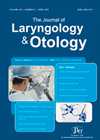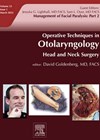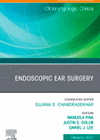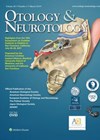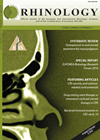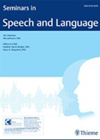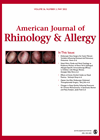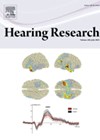
Journal Reviews archive for September 2022
A comparison between trainee and trainer outcomes in mastoid surgery
In this era where training faces restrictions due to theatre time, fewer sessions available to trainees and requirements of consultant-led and consultant-delivered services, one unit confirmed that myringoplasties given to trainees reduced from 34.2% to 16%. This study compares outcomes...
Facial reanimation dynamic trends
Facial nerve paralysis leads to functional loss and aesthetic issues. Several techniques are used to restore function and to improve cosmesis. The gold standard is dynamic facial reanimation. Typically, the masseteric, hypoglossal, and contralateral facial nerve branches have been used...
Is endoscopic stapes surgery safe and are outcomes comparable to microscopic stapes surgery
Endoscopic techniques for visualisation of the middle ear were described in 1967 by Mer and colleagues, and the use of transcanal endoscopic ear surgery (TEES) has since expanded to a wider range of otologic applications including tympanoplasty and excision of...
International consensus paper on implantable devices for conductive or mixed loss
This is a weighty but insightful ‘Special Feature’ paper in the June edition of Otology and Neurotology. It has the broad aim to gather current opinion from otologists, audiologists, manufacturers and health-economists from around the world on unilateral hearing implantation...
Nasal polyps, does size matter?
This study from Germany investigates the correlation between nasal polyp size and return of olfactory function following endoscopic sinus surgery. Olfaction is affected more in patients with CRSwNP than with CRSsNP and the best chance of smell recovery occurs in...
Do they talk the talk and walk the walk: self-rating measures versus reality
The aim of speech and language therapy interventions is to impact communication skills in everyday interactions. In order to measure this, rating scales (both self-rating and consultee-rating) are commonly employed in clinical practice settings. Many rating scales have been shown...
Should we be utilising the pre-lacrimal approach for maxillary sinus inverted papilloma?
For some time now, gold standard management of the maxillary sinus inverted papilloma has been endoscopic medial maxillectomy (EMM). Recently the endoscopic prelacrimal recess approach (EPLRA) has been reported to provide good access whilst preserving the nasolacrimal duct and inferior...
How do mermaids hear?
When the imagery of childhood fairy tales meets the more clinically analytical mind of an adult, there may at some point come the question, ‘how do mermaids hear’? Luckily a department of biology in Denmark has sought to furnish such...
A diagnosis-based scoring system to predict outcomes in necrotising otitis externa
Patients admitted with necrotising otitis externa have increased six-fold in the last 10 years. The prognosis is variable and dependent on co-existing morbidities. Charlston Comorbidity Index (CCI) is a weighted comorbidity scoring method, based on the presence or absence of...
Factors influencing transformation of laryngeal dysplasia to malignancy in a 10-year review
Laryngeal dysplasia has a propensity to change into malignancy, the generally reported rate of this being about 14%. In this retrospective study of 125 patients, the authors have assessed the severity of dysplasia in relation to the incidence and time...
Indication and timing of electrodiagnostic tests in facial palsy
This excellent review describes the benefits and limitations of electrodiagnostic testing for patients with facial paralysis. Tests such as Schirmer, stapedial reflex and electrogustometry have been largely replaced by neurophysiologic tests like nerve excitability test (NET), electroneuronography (ENoG), surface electromyography...

